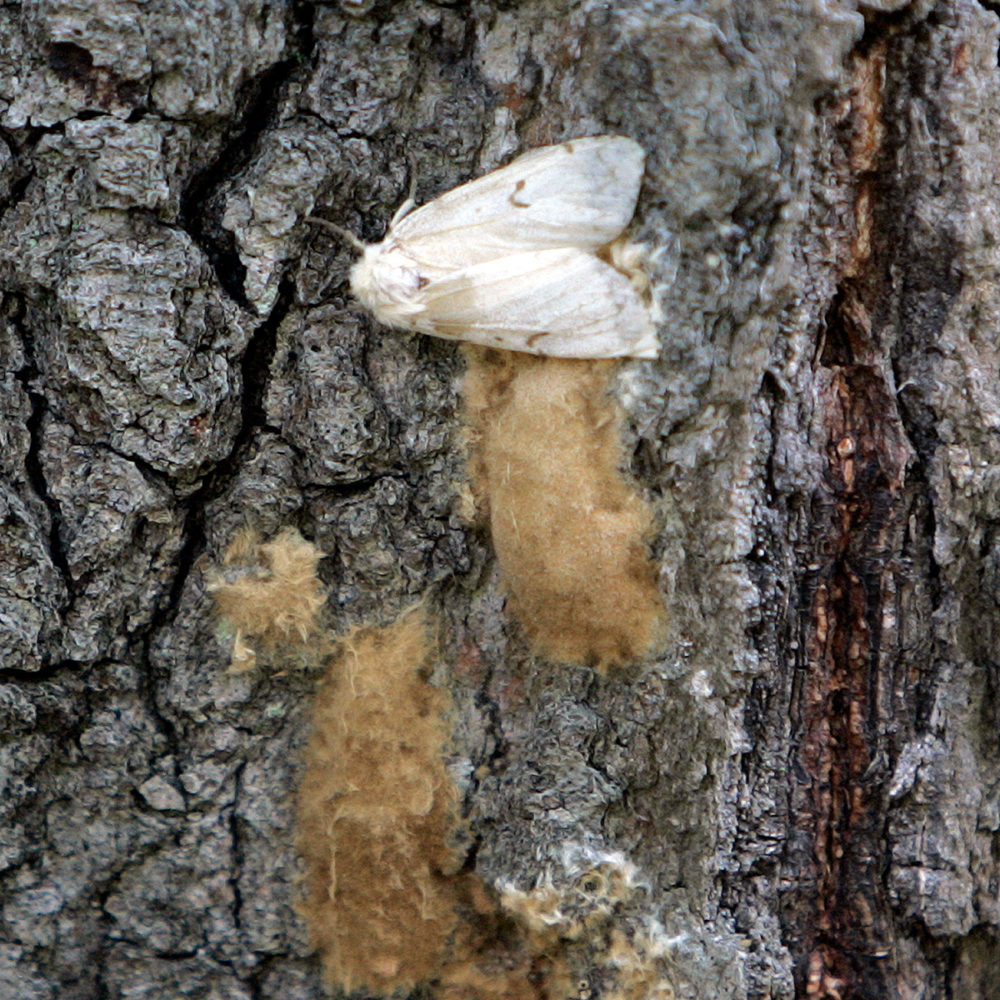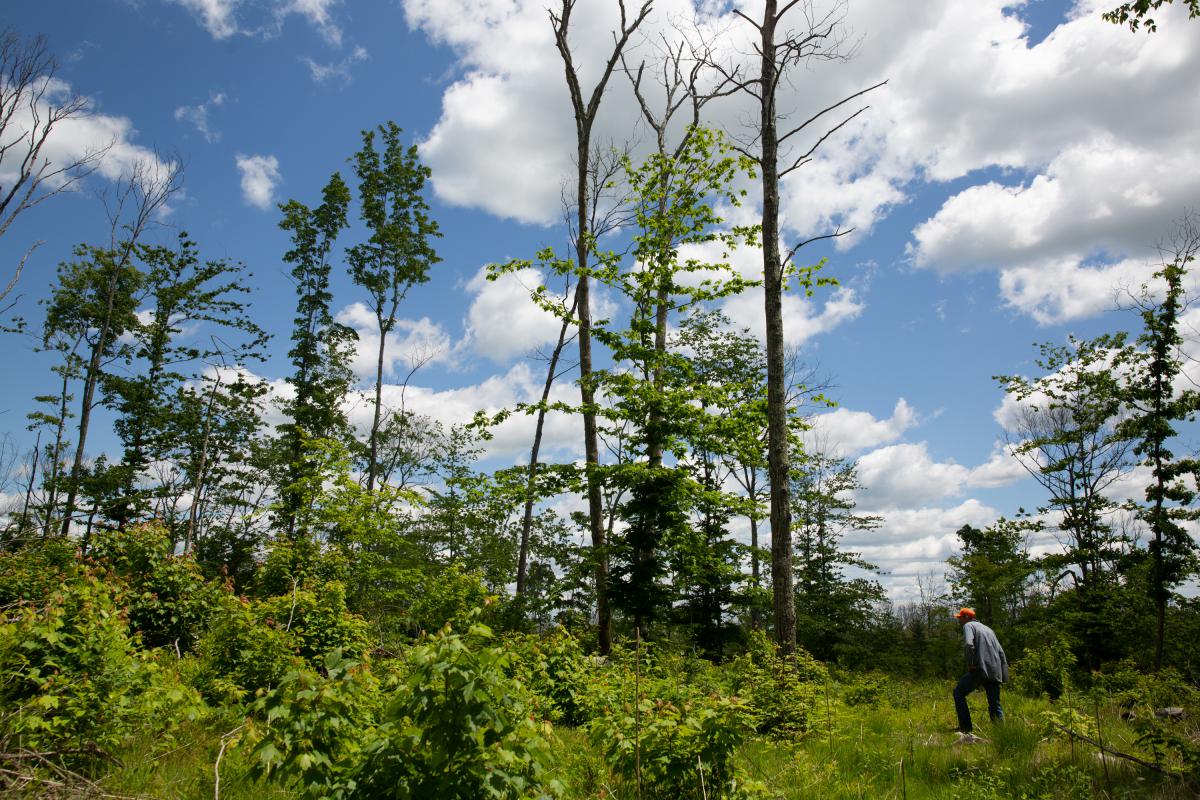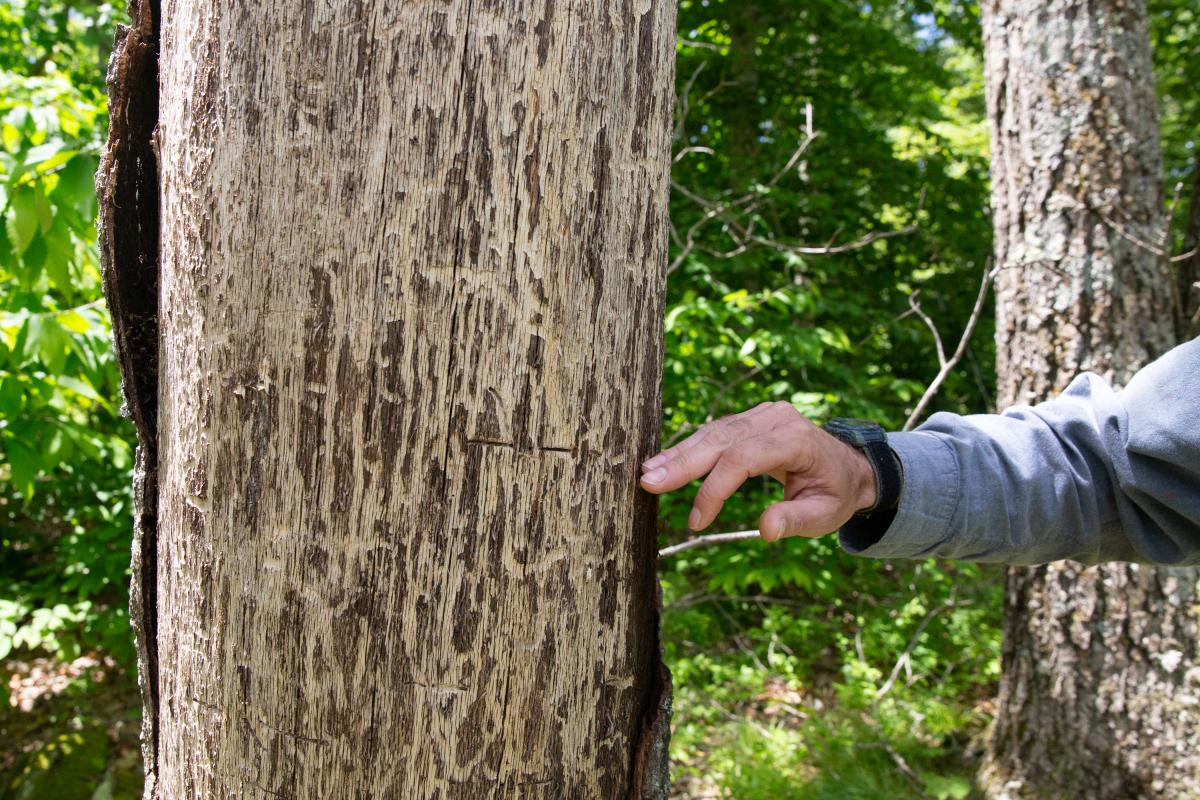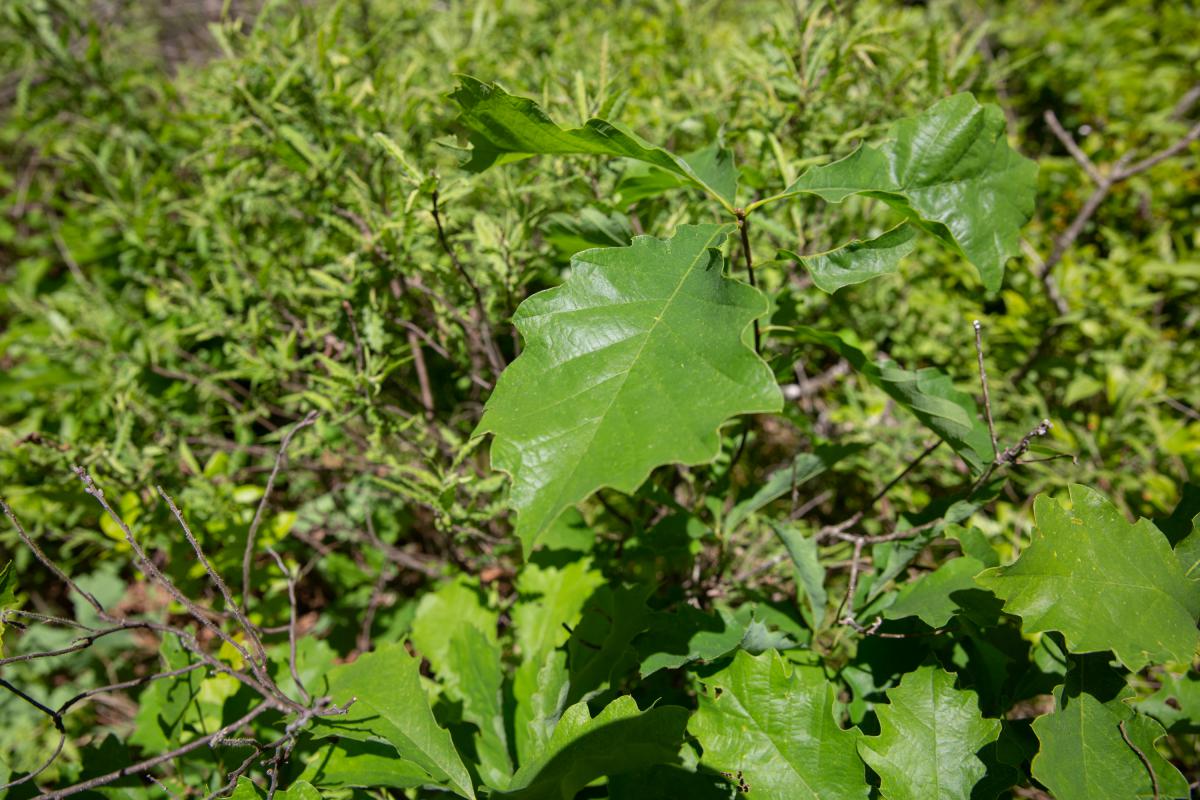Advertisement
Gypsy Moths On The Decline — For Now — But Damage Is Already Done

In recent years, an invasive insect called the gypsy moth has spelled doom for countless New England trees. From 2016 through 2018, it’s estimated gypsy moths defoliated more than 2 million acres in southern New England, which means a lot of cleanup for foresters.But among all that destruction there is some good news: gypsy moth populations are, finally, declining.
Dan Evans drove a pickup truck down a bumpy road in Connecticut’s biggest state forest. He’s the forester for Pachaug State forest, and he wound his way up a trail that was closed in 2017. “As we come up Firetower Road you can really start to see the damage in some of the roadside oak trees,” Evans said. “As we drive up the road you’ll certainly notice the fine limb material on the sides of the road falling out of the overhead trees here.” It’s dead scarlet oak. Killed by gypsy moths. An invasive insect which, in high numbers, can rapidly eat up leaves and kill off trees. Usually, rain activates a fungus that keeps gypsy moth populations in check.
But when it doesn’t rain, gypsy moths can flourish in trees and bring with them their own type of precipitation.“If we were standing in this forest in 2016 or even 2017, we’d be feeling a ghost rain on our face. That’s what the foresters from the 1980s always referred to the gypsy moth evidence as: a ‘ghost rain,’” Evans said.
“The leaf particles, and excrement from the insect coming down from the canopy.”

Gypsy moth numbers spiked in southern New England in 2017, after nearly two years of drought paved the way for one of the worst outbreaks since the early 1980s. As we walked, the damage was all around us.
“Almost all of the oak trees in this stand are dead,” Evans said.
Damage was also severe in neighboring Rhode Island and Massachusetts.
Tawny Simisky, an entomologist with UMass Extension, said Massachusetts saw defoliation numbers peak near 1 million acres in 2017.
But since then, she’s seen a big improvement.
“My hope is that in 2020 there will be very few folks, certainly in Massachusetts, with noticeable populations of gypsy moth,” Simisky said. “My hope is that we’re … at the tail end of this outbreak.”
The reason? A lot of rain supercharged a fungus called entomophaga maimaiga. It’s really good at killing off gypsy moth caterpillars.
Back at Pachaug State Forest, Forester Dan Evans said it’s good that insect numbers are dropping, but work still remains.
Advertisement

“This gypsy moth outbreak has really changed our work plan over these past three years where we’ve been very much focused on public safety,” Evans said.
Evans said the risk presented by dead trees grows larger as time goes on. Bigger limbs will fall, and, if the trees aren’t cut, roots could rot and potentially topple the whole tree.
In Pachaug, about 4,000 trees are at risk. About 1,200 have been removed to date.
“You see that tree over there with an orange dot on it? That’s one that was identified in our hazard tree assessment process,” Evans said.
But there’s still a lot of life in the forest. Evans shuffles through the brush, showing me a seedling.

“Our future forest getting started here, Evans said. “Some good vigorous young oak seedlings started in full sun conditions. I’m pretty darn confident that some day, some forester is going to be able to manage this as a dominant overstory white oak in this location.”
About 85 years in the future. But for now, Evans’ concerns are more immediate. Making the forest safe for hikers and keeping his fingers crossed that rain continues to keep the gypsy moth in check.
This story is a production of the New England News Collaborative was originally published by Connecticut Public Radio.
This segment aired on September 2, 2019.